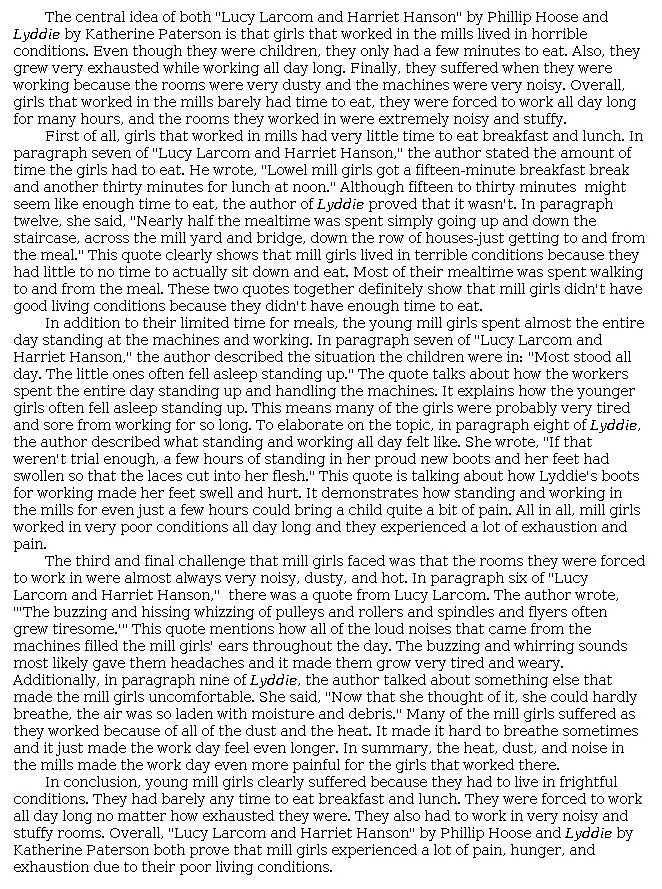2018 MCAS
Grade 7 English Language Arts
Question 15
Idea Development - Score Point 5
The essay fully develops the central idea that mill workers endured miserable working conditions and supports it with relevant evidence from the passages. Details describe the girls as having "very little time to eat" and spending "almost the entire day standing at the machines and working"; the working conditions are described as being "very noisy, dusty, and hot." These details result in a rich expression of how the "mill girls" suffered. Organization is also skillful, as the three main points relate to both texts and build cohesiveness. The language supports insightful commentary: the "frightful conditions" of the mills are made clear. There is full awareness of the task and mode.
Standard English Conventions - Score Point 3
The essay demonstrates consistent control of Standard English conventions. Sentence structures are varied and correct, and control of grammar, usage, and mechanics helps support fluency.

[ 5 Points |
5 Points |
4 Points |
3 Points |
2 Points |
1 Point |
0 Points]
